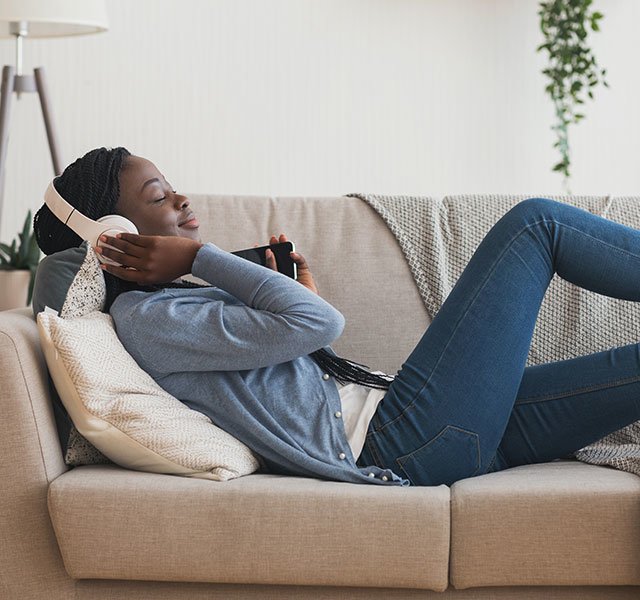Now more than ever, headphones have become a solution to help people hear during meetings or calls just as much as they are great for cancelling out background noise.
"Headphones have become a key part of our lives," says Nicole Velander, AuD, an audiologist at Henry Ford Health. "By themselves, earbuds and headphones aren’t dangerous to hearing. But just like most things, they can be used incorrectly and that’s when they can potentially cause damage."

Headphone Safety
You already know that cranking the volume on your favorite playlist can be damaging to your hearing. What's equally concerning is increasing the volume on your headphones to drown out the sounds around you. So, for example, if your child is taking a drum lesson while you're on a Zoom call, you might turn up the volume on your headphones.
"Perceptually, whatever you’re listening to may not seem that loud," Velander says. "But if you step back and take a look at the actual level in decibels, which is how we measure loudness, you might be surprised."
In addition, that sound output is directly in your ear canal. What ultimately causes irreversible damage is listening too loudly and for too long.
Taking Steps For Safer Listening
There are a number of things you can do to ensure your listening habits are appropriate, not dangerous, and prevent hearing loss:
- Understand safe listening limits. There's a limit to how long — and how loud — you can safely listen. For every 5 decibels of sound you add, you have to cut your listening time in half. For example, 85 decibels is safe for 8 hours. But if you boost the volume to 90 decibels, you can only listen safely for 4 hours.
- Turn down the background noise. It's not enough to pay attention to the sound level coming through your headphones or earbuds. Make an effort to quiet ambient noise coming from sources you can control (like the television or gym equipment).
- Set your sound level. Most media players can produce sounds up to 120 decibels (equivalent to the sound level at a rock concert). "At that level, damage can occur pretty quickly," Velander says. To ensure you don't listen too loud or long, set listening limits. You can use a sound level meter app or just set a volume limit on your devices.
- Take listening breaks. If you take a 5-minute break for every 30 minutes of listening, you'll drastically reduce your risk of hearing damage. For children, consider longer, more frequent breaks. "They should listen at no more than 60% of the device's maximum limit for 60 minutes then take a 5- to 10-minute break," Velander suggests.
- Select over-the-ear headphones. Invest in over-the-ear style headphones, preferably with noise-canceling technology. Headphones that fit over the entire ear allow for more protection from outside noise. With background noise eliminated, you won’t need to turn the volume up as high. They also put more distance between the sound and your eardrum.
According to Velander, for Zoom calls and online learning, most people use headphones correctly and at safe levels. But if you notice muffled hearing or a ringing in your ears directly following a listening experience, you're probably listening too loud.
"In a few hours or days your hearing will probably return to normal, but with repeated exposures, decreased hearing acuity can become permanent, resulting in irreversible damage," Velander says.
Concerned you may have damaged your hearing? Schedule a hearing exam with your audiologist.
Reviewed by Dr. Nicole Velander, an audiologist who sees patients at Henry Ford Wyandotte - Templin and Henry Ford West Bloomfield Hospital Clinics.



